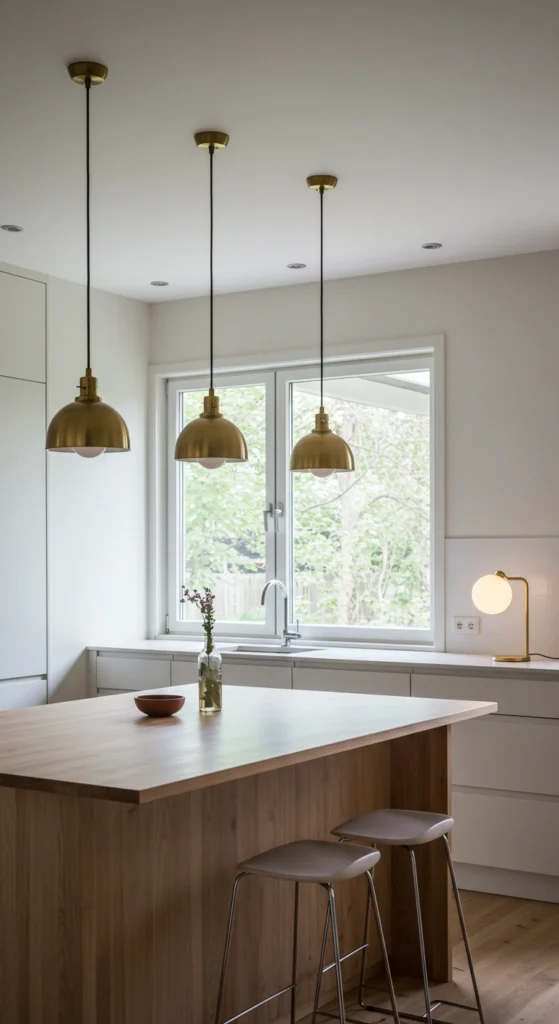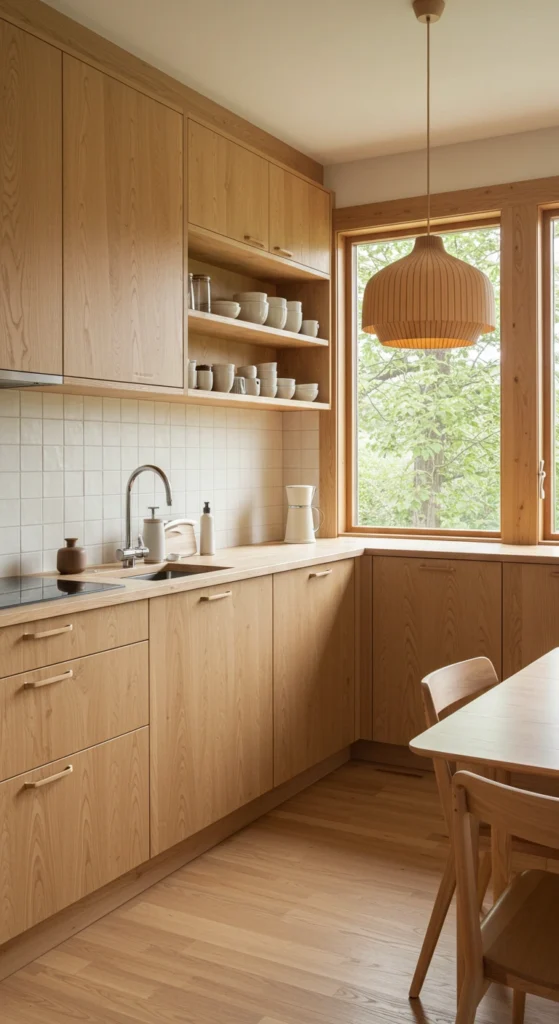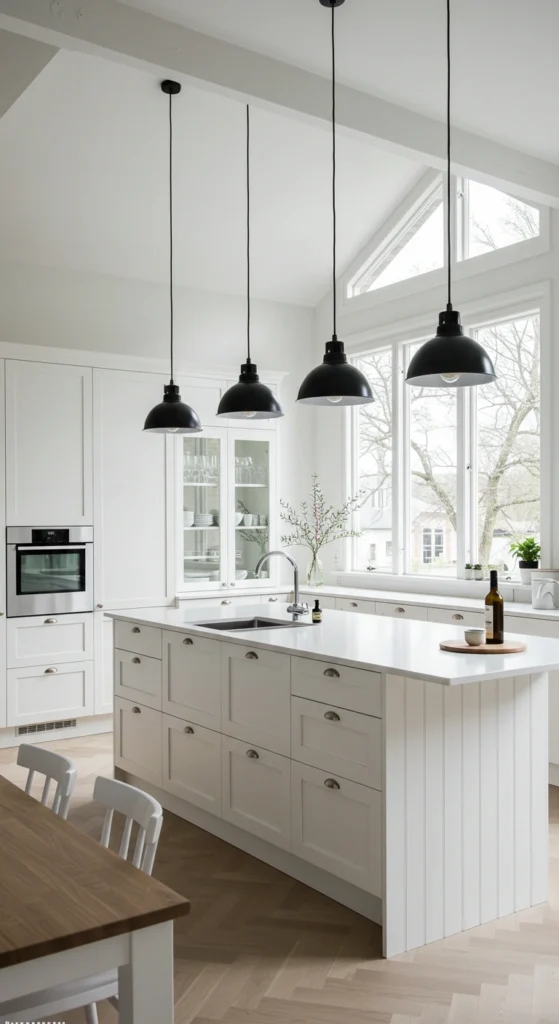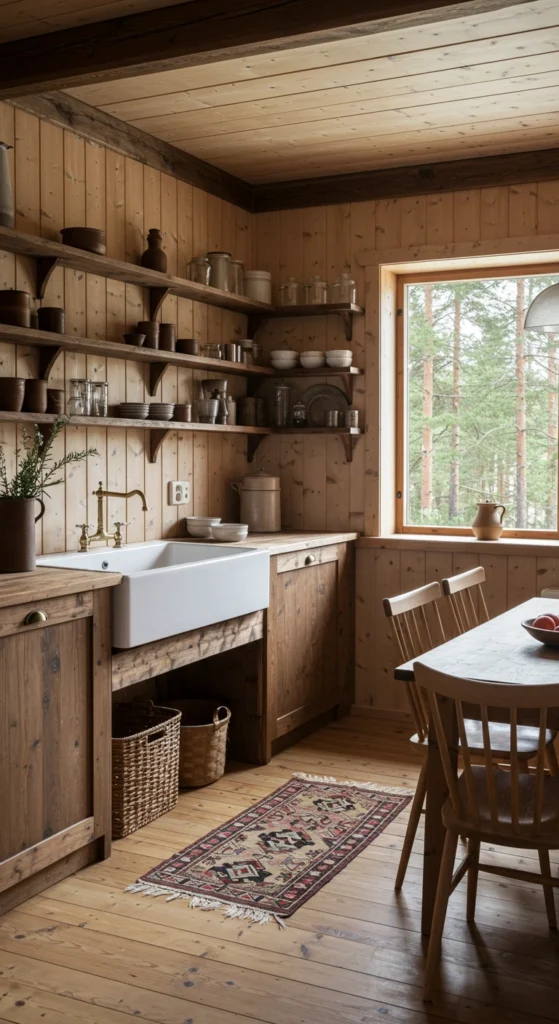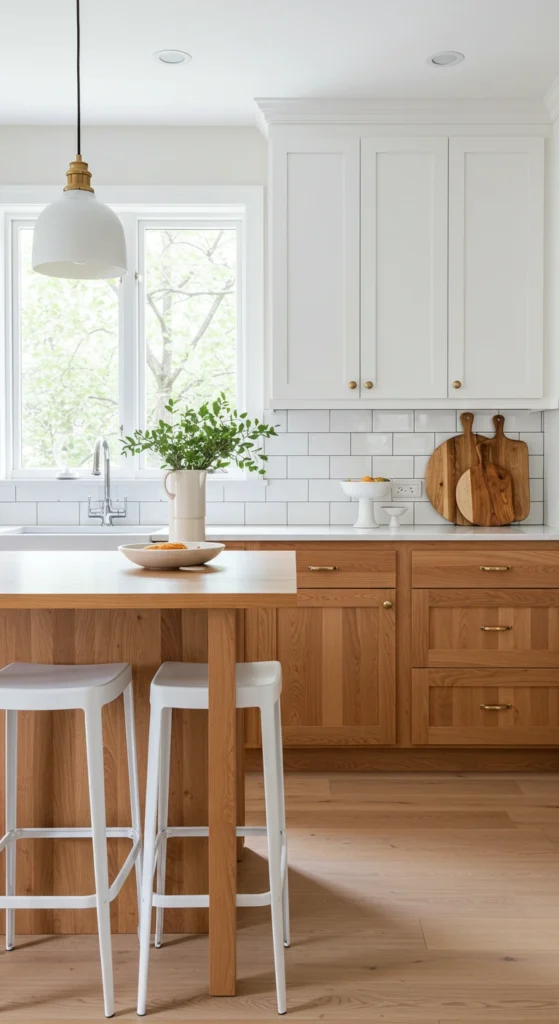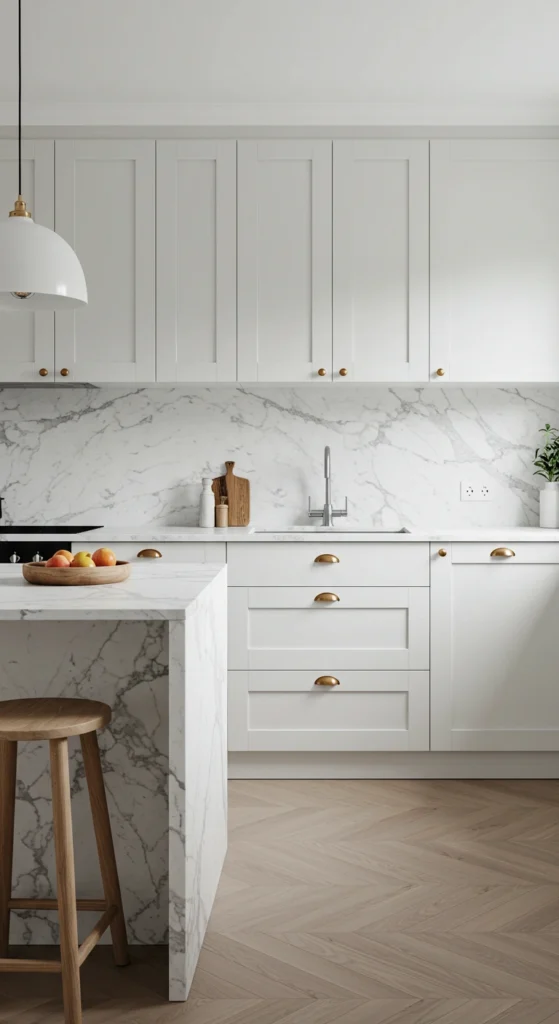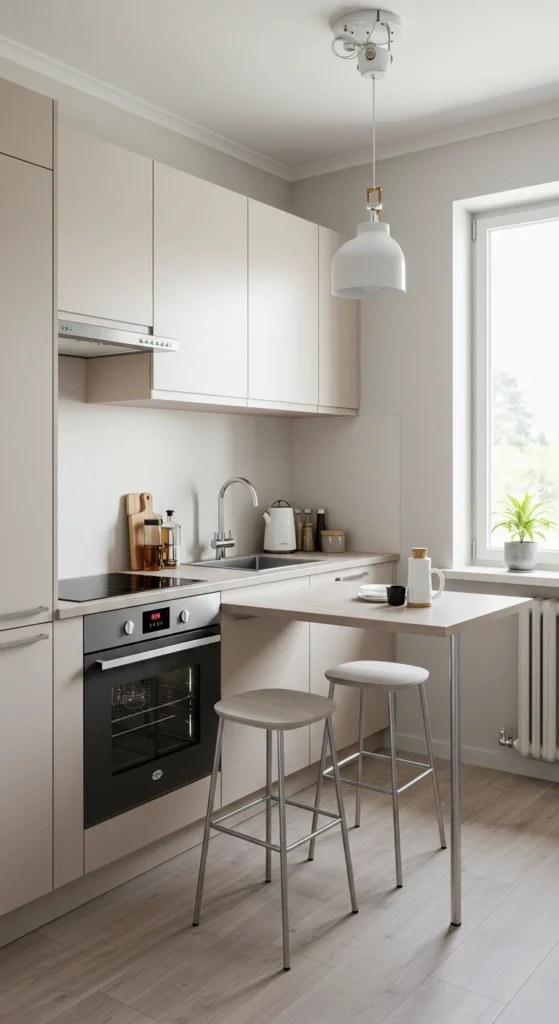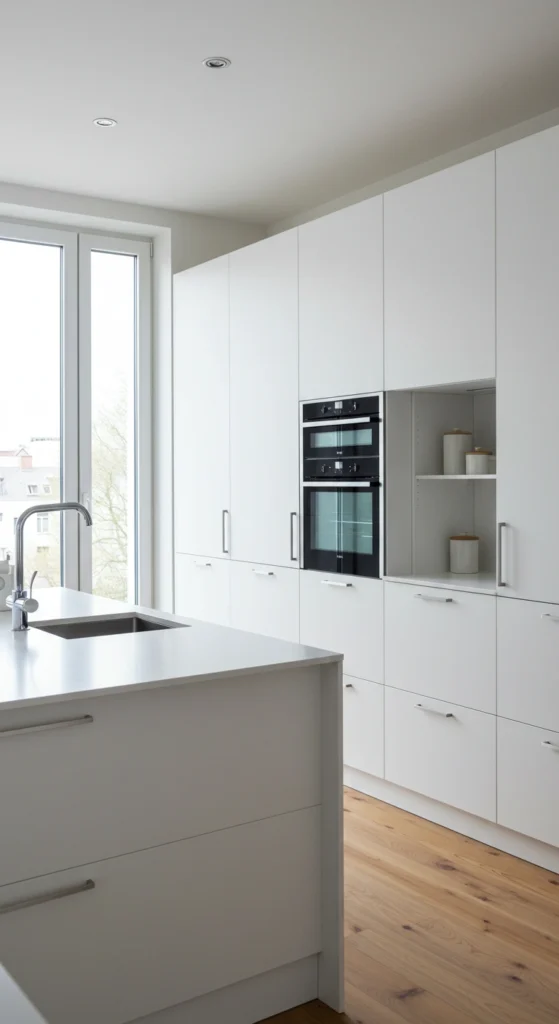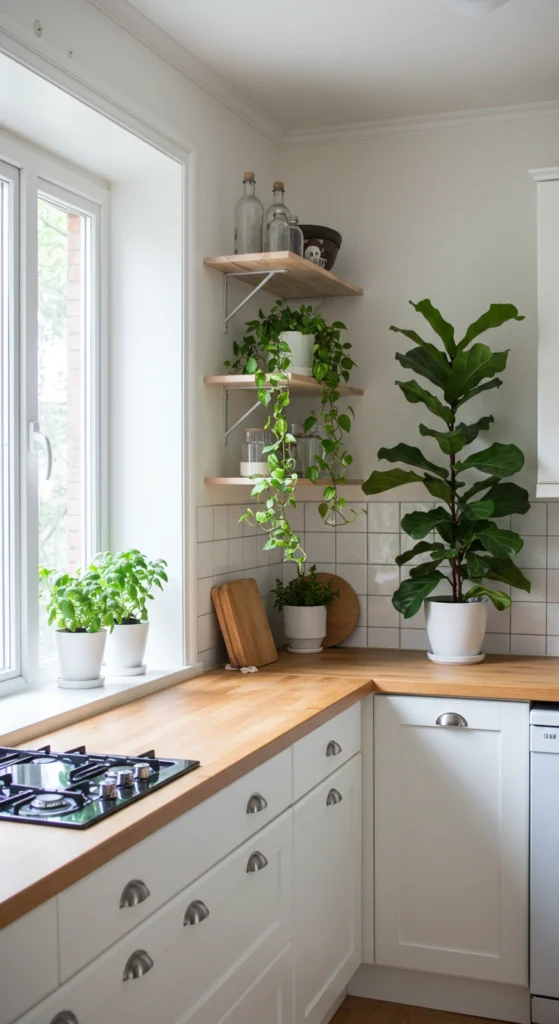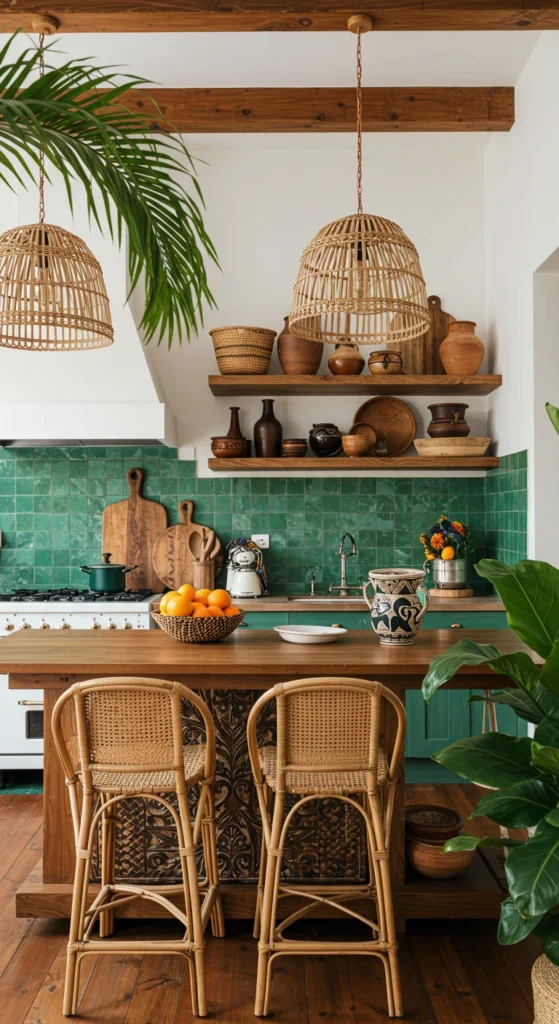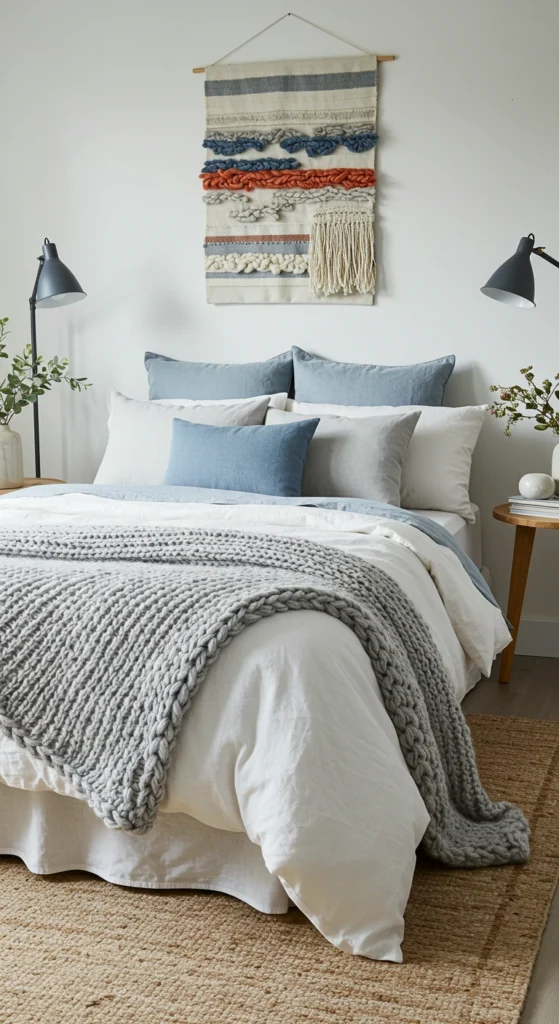The Nordic kitchen design philosophy stands as a testament to the Scandinavian commitment to simplicity, functionality, and natural beauty. Originating from Norway, Sweden, Denmark, Finland, and Iceland, this approach to kitchen design has captured the imagination of homeowners worldwide with its clean lines, bright spaces, and practical elegance. Nordic kitchens aren’t just cooking spaces—they’re sanctuaries that embrace light, nature, and comfort while rejecting unnecessary ornamentation.
Key Elements of Nordic Kitchen Design
Minimalism
The cornerstone of Nordic kitchen design is minimalism—a deliberate reduction to the essential. This doesn’t mean stark or cold spaces, but rather thoughtfully curated environments where every element serves a purpose. Countertops remain largely clear, cabinets feature clean lines, and visual clutter is methodically eliminated, creating a sense of calm and order.
Natural Light
Nordic countries experience long, dark winters, making the maximization of natural light a fundamental design principle. Large windows, often undressed or minimally adorned, allow sunlight to flood the space. Strategic placement of reflective surfaces helps bounce light throughout the room, creating an airy, welcoming atmosphere even on the gloomiest days.
Natural Materials
Authentic Nordic kitchens celebrate natural materials, particularly wood. Pine, oak, birch, and ash are commonly featured, whether in flooring, countertops, cabinets, or accent pieces. These materials bring warmth and texture to the space while establishing a connection to the region’s abundant forests. Stone, particularly in lighter hues, often complements wood elements.
Neutral Colors
The Nordic color palette typically revolves around whites, creams, grays, and other neutral tones that amplify natural light. These serve as a backdrop for occasional muted blues, soft greens, or blush pinks that echo the region’s natural landscapes. The resulting spaces feel tranquil and timeless rather than trendy or overwhelming.
Functionality
Practicality reigns supreme in Nordic design. Storage solutions are cleverly integrated, work areas are optimized for efficiency, and every item has its place. This functionality doesn’t sacrifice beauty—instead, it elevates it through thoughtful design choices that make daily life more pleasant.
Hygge
The Danish concept of “hygge” (pronounced hoo-ga)—a feeling of coziness, contentment, and well-being—infuses Nordic kitchens with warmth. Soft textiles, ambient lighting, and comfortable gathering spaces transform utilitarian cooking areas into the heart of the home, where family and friends can connect over shared meals and conversation.
Nordic Kitchen Design Ideas
1.All-White Kitchen
A quintessential Nordic choice, all-white kitchens create a sense of expansiveness and purity. To prevent sterility, designers incorporate texture through materials like matte tiles, textured woods, or woven elements. Subtle variations in white tones add depth and visual interest without compromising the clean aesthetic.
2.Wooden Kitchen
Celebrating the region’s forestry heritage, wooden kitchens bring natural warmth to Scandinavian homes. From light ash to honey-toned pine, the wood’s natural grain becomes a decorative element in itself. Often, cabinetry features simple construction with minimal hardware, allowing the beauty of the material to take center stage.
3.Bright Kitchen
Nordic bright kitchens maximize natural light through thoughtful window placement, reflective surfaces, and open layouts. Lighting fixtures serve as both functional elements and design statements, with pendant lights often suspended over islands or dining areas to create focal points within the space.
4.White and Green Kitchen
The combination of white with soft, sage greens creates a fresh, nature-inspired palette. This pairing offers a subtle nod to the verdant landscapes of Scandinavia while maintaining the crisp, clean aesthetic. Green can appear in cabinetry, backsplashes, or through the addition of abundant plants.
5.Rustic Kitchen
Nordic rustic kitchens incorporate traditional elements like exposed beams, farmhouse sinks, and handcrafted details. These spaces balance modern conveniences with historical charm, often featuring vintage tools or heirloom pieces as meaningful decorative elements.
6.White and Wood Kitchen
Perhaps the most recognized Nordic kitchen style combines the brightness of white with the warmth of wood. This balanced approach creates spaces that feel both airy and grounded. Common applications include white cabinetry paired with wooden countertops or wood flooring beneath white islands.
7.Black Kitchen
A contemporary interpretation of Nordic design, black kitchens deliver dramatic impact while maintaining Scandinavian simplicity. Matte black cabinetry paired with light countertops and wooden accents creates a striking contrast that feels both modern and timeless.
8.Marble Kitchen
Marble introduces subtle luxury to Nordic kitchens without overwhelming the clean aesthetic. Typically featured in lighter varieties with delicate veining, marble countertops or backsplashes add sophisticated texture while maintaining the bright, airy quality essential to Scandinavian spaces.
9.Small Nordic Kitchen
Nordic design principles excel in compact spaces. Small kitchens benefit from the emphasis on functionality, with clever storage solutions and multi-purpose elements maximizing every square inch. Light colors and thoughtful lighting make these spaces feel larger than their dimensions suggest.
10.Minimalist Nordic Kitchen
The ultimate expression of Nordic philosophy, minimalist kitchens strip away everything non-essential. Hidden storage, integrated appliances, and clean lines create peaceful, uncluttered environments. These spaces require disciplined organization but reward with serene functionality.
11.Nordic Kitchen with Plants
Bringing the outdoors in, Nordic kitchens often feature carefully selected plants that thrive in bright, indirect light. Herbs in simple pots, trailing vines, or structural plants in minimalist containers add life and color while maintaining the clean aesthetic.
12.Nordic Kitchen Lighting
Lighting in Nordic kitchens balances function with form. Pendant lights with simple shapes in materials like brass, copper, or matte black provide task lighting while serving as design elements. Natural light remains the priority, with artificial lighting designed to complement rather than compete.
Conclusion
Nordic kitchen design stands as a masterclass in creating spaces that nourish both body and soul. By embracing minimalism, natural materials, and thoughtful functionality, these kitchens offer refuge from the complexities of modern life. The enduring appeal of Scandinavian design lies in this perfect balance—where practical needs meet aesthetic harmony, creating kitchens that feel both timeless and thoroughly contemporary.
Whether you’re drawn to the bright airiness of white spaces, the natural warmth of wood, or the dramatic impact of black elements, Nordic design principles can be adapted to suit your personal taste while maintaining the core values of simplicity, functionality, and connection to nature that have made this aesthetic a global favorite.
